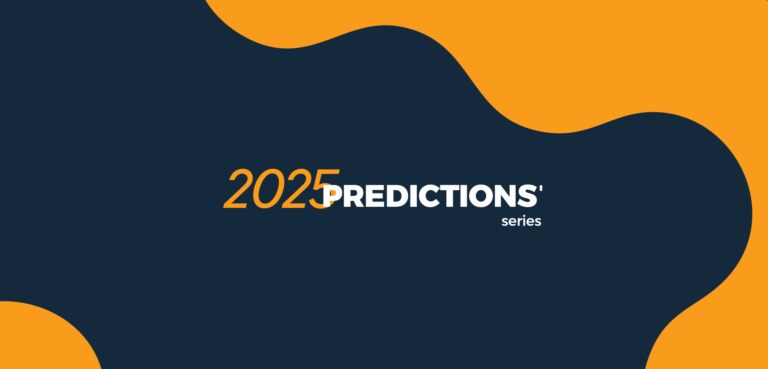2nd U.S. Presidential Debate 2024 Election
The results from the 2nd U.S. Presidential Debate were clear: Kamala Harris decisively outperformed Donald Trump, as demonstrated by our biometric analysis using Galvanic Skin Response (GSR) technology. This study, our largest operation to date, provided a detailed and objective measure of emotional impact and audience engagement throughout the debate.
How did the audience respond to the candidates? And when we say “largest”, just how extensive was that? Read on to find out.
Largest ops to date
Our analysis was based on a sample of 500 viewers across the U.S., each tuning into the debate live from their homes. Viewers had the freedom to choose from seven networks and were equipped with Mediaprobe’s proprietary biometric GSR sensors. This approach allowed us to capture real-time emotional responses in a more natural environment compared to controlled lab conditions. Furthermore, this study represented our largest biometric measurement operation to date, providing us with a more realistic understanding of how people unbiasedly watched and engaged with the candidates and topics on the networks of their choice.
Candidate performance per topic
Our data showed that Harris excelled, particularly on key issues like immigration, social, and civil rights—most notably reproductive rights.
The graph below showcases the Affective Score = EIS x Dial, and each candidate has a score from 0 to 100 for each topic. Mediaprobe’s Emotional Impact Score (EIS) is an objective, comparable metric of engagement that goes beyond eye tracking to reflect true audience response to content. The Dial further measures the valence, or sentiment, of these responses.
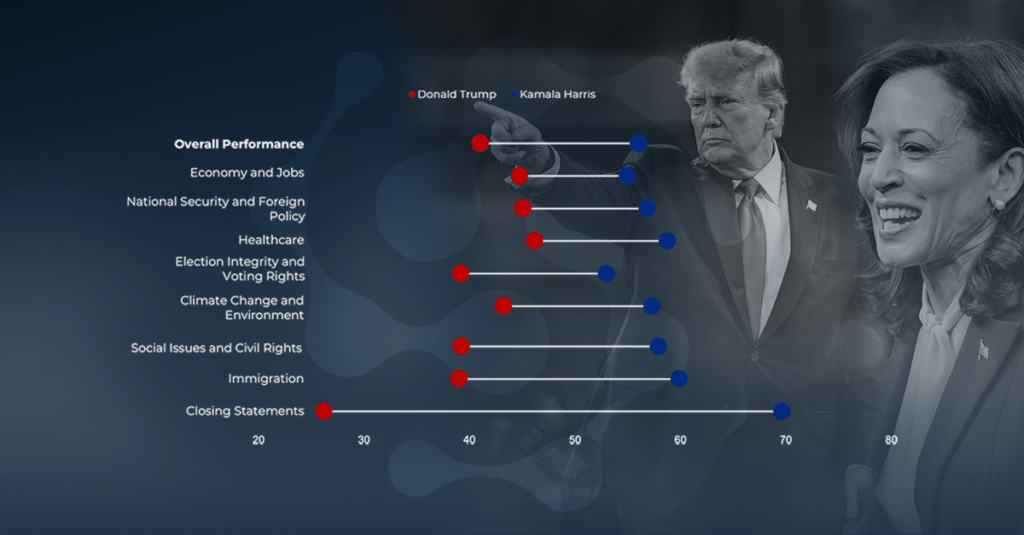
Closing Statements
Notably, the candidates’ closing statements were particularly telling in terms of messaging effectiveness and audience engagement. Kamala Harris achieved her highest engagement score during this segment, while Trump struggled to connect with the audience. Take a look at the short video of our dashboard — it captures second-by-second emotional responses, offering an in-depth view of how each moment resonated with viewers.
Affective Map and Demographic Insights
In the crucial segments of swing state and undecided voters, the results varied. Trump performed slightly better with undecided voters, while Harris had the edge in swing states.
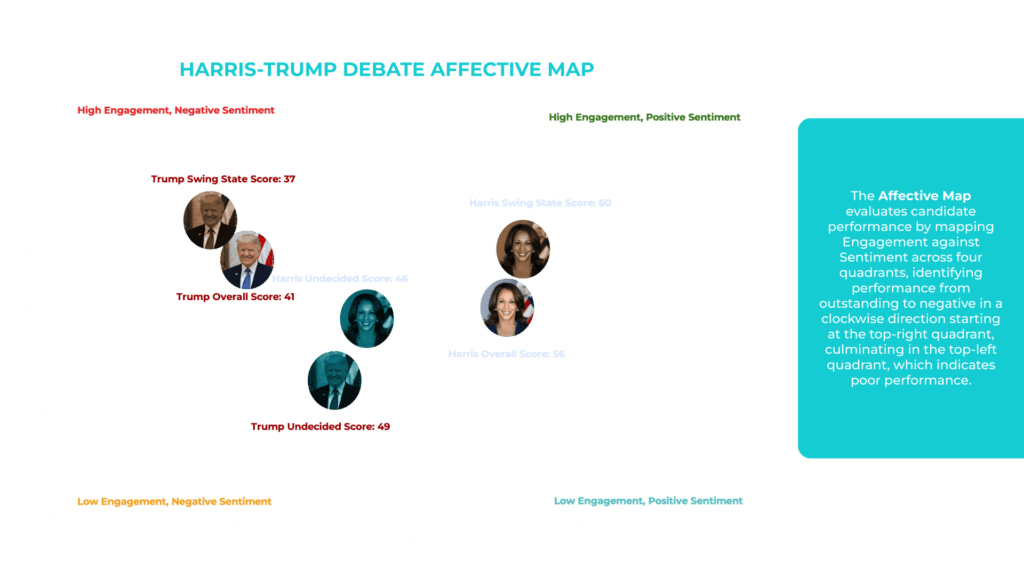
Interestingly, Harris resonated strongly with female, minority, and younger viewers, while Trump held an advantage with white male voters.
Mediaprobe’s Model Accurately Predicted the Debate Outcome
Our table below presents the Affective Score (= EIS x Dial) for each candidate (on a scale of 0 to 100), as well as the “Winner Vote,” derived from post-session surveys. These results are further strengthened by Mediaprobe’s ability to integrate implicit biometric data with explicit declarative feedback, delivering a comprehensive picture of audience sentiment. Notably, while Harris outperformed Trump across almost all channels, FOX News viewers still leaned toward Trump.
Years of monitoring emotional reactions to TV content have provided us with hundreds of thousands of hours of data that enable us to model and predict outcomes. In this case, Mediaprobe’s model accurately predicted the debate outcome, closely aligning with post-session survey results. This correlation further validates the effectiveness of our innovative approach to measuring true audience engagement.
As the 2024 presidential race intensifies, these data-driven insights may prove invaluable in shaping campaign strategies and predicting electoral outcomes.
Have a question for us? We’d be happy to help. Contact us.
Learn more and watch our on-demand webinar in collaboration with the Video Advertising Bureau (VAB): Optimizing Political Messaging with Emotional Insights: Using Innovative Biometric Data to Impact Strategies


